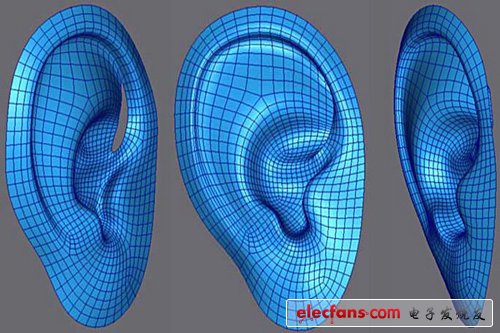According to reports, researchers from Cornell University and Will Cornell Medical College collaborated to create a new type of artificial ear using three-dimensional (3D) printing technology and gels containing live cells of bovine ears, both in appearance and function. Both are comparable to real ears. The researchers pointed out that this new type of bioengineering alternative ear can be used as a plan for plastic surgery to help children with natural microtia and those who have lost part or all of their auricles for other reasons. Related papers were published online in the "Public Science Library · Comprehensive" published on February 20. Jensen Spector, director of the Bioregeneration Medicine and Surgery Laboratory and Associate Professor of Plastic Surgery, Will Cornell Medical College, said that the density of the usual artificial ear material is similar to that of Styrofoam, and the texture is quite different from the real ear; If the patient's rib tissue is used to surgically reshape the external ear, it is not only difficult, but also brings great pain to the patient, so it is difficult to make a beautiful and practical artificial ear. To create this bioengineered ear, the researchers first used a fast rotating 3D camera to capture the ear information of several children, input it into a computer to form a 3D image, and then used the 3D printer to print a solid mold according to the image and inject a high-density collagen into it. Protein gel, which contains bovine ear cells that can produce cartilage. In the following weeks, the cartilage gradually increased and replaced the gel. After 3 months, the cartilage will form a flexible outer ear, replacing the collagen scaffold originally used for shaping. Lawrence Bernassa, one of the main authors of the paper and associate professor of biomedical engineering, said that designing the model takes only half a day, and it can be printed in about a day. It takes another half an hour to inject the gel, and it takes only 15 minutes to remove the model. Cultured in nutrient medium for a few days, it can be used for transplantation. "Using human cells, especially the patient's own cells, will reduce the possibility of rejection." Spector pointed out that the best time to transplant bioengineered ears for children is when they are five or six years old. If all future safety and efficacy issues are resolved, this bioengineered ear can be used for human transplantation in as fast as 3 years. Edit circle 3D printing is nothing new, but printing living organs with corresponding functions is still staggering. While people are still amazed by the 3D technology printing out wonderful cups and toys, this study is tantamount to bringing people from the "primitive society" to the "socialist society". It is inconceivable how great potential 3D printing technology can be tapped. Taking a step back, even if the printed living organs cannot be used for medical transplantation, we still have to applaud the incredible innovative spirit of the researchers. Wireless Fence,Wireless Dog Collar,Wireless Dog Fence,Wireless Electric Dog Fence Elite-tek Electronics Ltd , https://www.aetertek.ca
July 15, 2020